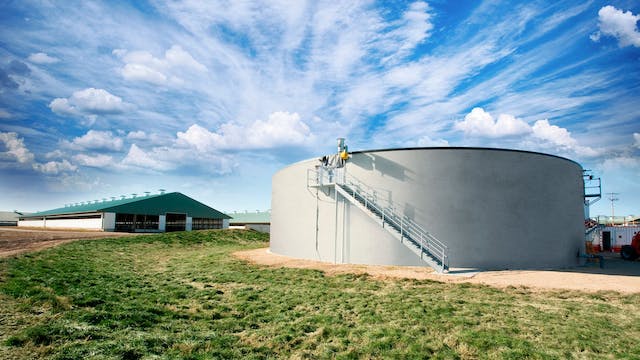The American Biogas Council (ABC) has released data highlighting the remarkable expansion of the U.S. biogas sector in 2023, marking the third consecutive year of record growth. Nearly 100 new projects were brought online last year, representing an impressive $1.8 billion in capital investments. Anticipating this upward trajectory to persist, ABC forecasts the launch of over 100 additional projects in 2024.
The surge in the U.S. biogas industry extends beyond mere financial investments and renewable energy output. It also translates to a proportional reduction in methane emissions and drives the establishment of recycling infrastructure—initiatives poised to yield lasting benefits for Americans in the decades ahead.
Biogas systems play a pivotal role in recycling organic waste by capturing methane emissions that would otherwise be released into the atmosphere. Through this process, biogas facilities convert methane into renewable energy, effectively diminishing reliance on fossil fuels for energy and fertilizer production. This multifaceted approach addresses the pressing need to manage vast quantities of food, water, and animal waste in the U.S., simultaneously curbing carbon emissions, preserving water quality, enhancing soil health, and generating dependable, renewable energy.
The newly operational biogas projects in 2023 added a staggering 66,000 standard cubic feet per minute (SCFM) of biogas production capacity. To put this into perspective, this output equates to the electricity generation potential of 4,000 football fields covered in solar panels or the equivalent of powering 600,000 homes or removing 600,000 gasoline-powered cars from the road.
See also: EU Aims to Boost Domestic Production of Clean Energy Equipment
“This is an exciting time of growth for a renewable energy sector that is directly responsible for methane emission reductions,” remarked Patrick Serfass, Executive Director of ABC. “As the biogas industry expands, so, too, does our capacity to capture methane emissions that would otherwise be emitted from organic waste. We can simultaneously use that captured methane to displace other emissions from fossil fuels that are used for energy and making fertilizer. It’s a win-win that often results in negative carbon emissions.”
Although landfill gas (LFG) remains a dominant contributor to the biogas sector in terms of both investment and output, the agricultural sector witnessed notable growth in 2023, with farm-based projects increasing by 13.4%. Cluster projects, which involve multiple farms linked to a central gas processing facility, emerged as significant contributors to growth, driving down project costs and fostering economies of scale.
Furthermore, the food waste sector experienced substantial expansion, with three new standalone biogas projects operational in 2023, and an additional 10 facilities slated for launch in 2024.
See also: U.S. Department of Energy to Invest Nearly $5 Million in Offshore Wind Center of Excellence
While biogas power projects remain the primary source of biogas production in the U.S., renewable natural gas (RNG) projects took center stage in 2023, representing 91% of all new projects. This trend is largely attributed to policies such as the federal Renewable Fuel Standard (RFS) and the California Low Carbon Fuel Standard (LCFS), which incentivize the use of renewable fuels to replace fossil transportation fuels.
Despite impressive growth, the U.S. biogas industry has only scratched the surface of its potential. With an estimated 15,000 new systems awaiting development, the sector is poised for exponential growth, offering substantial economic, environmental, and energy benefits.

